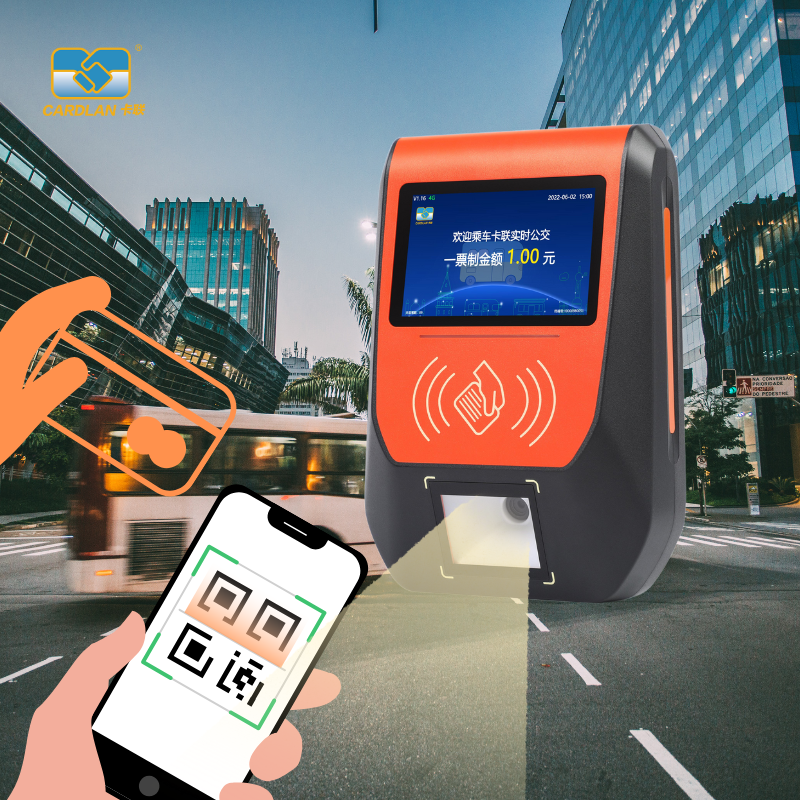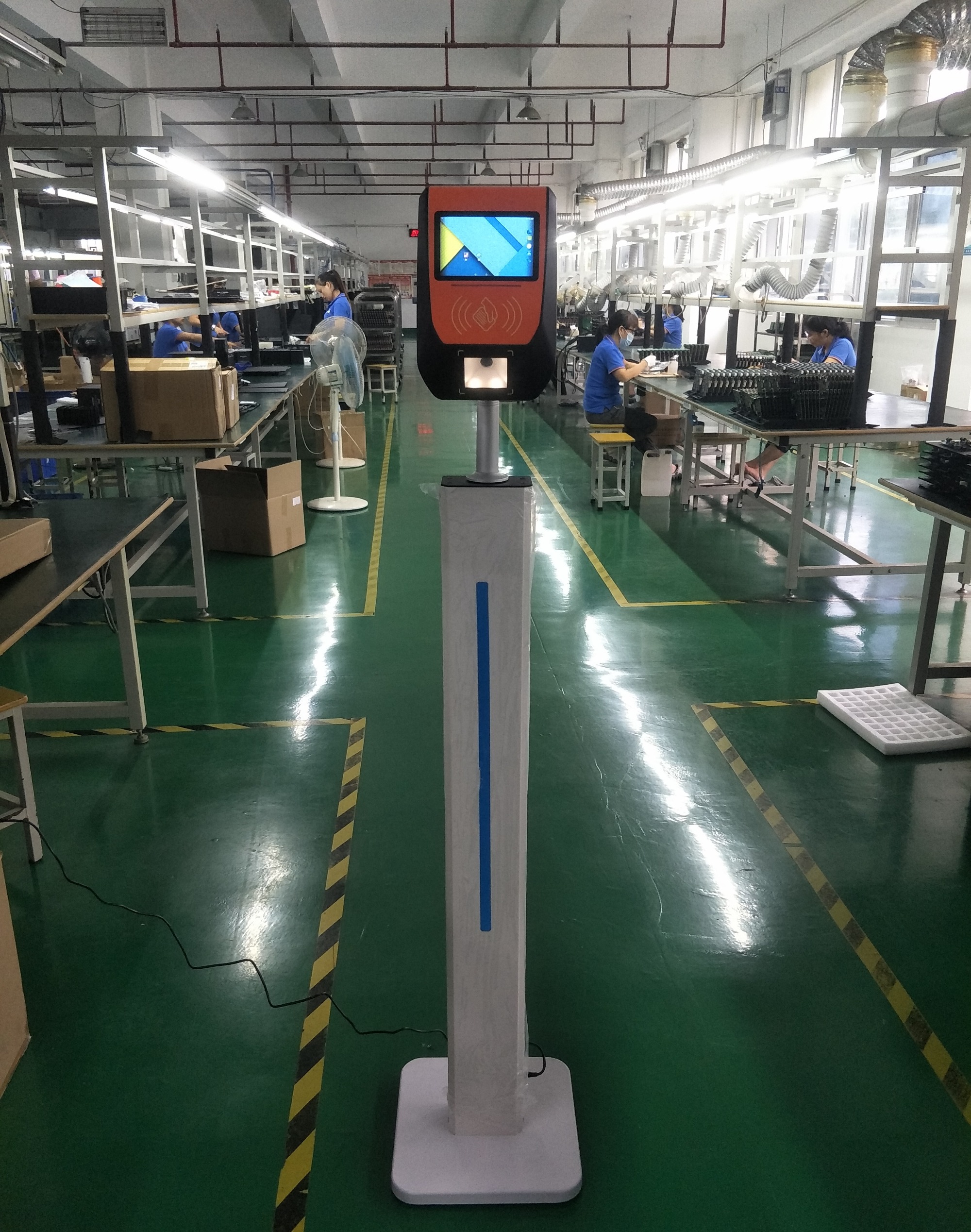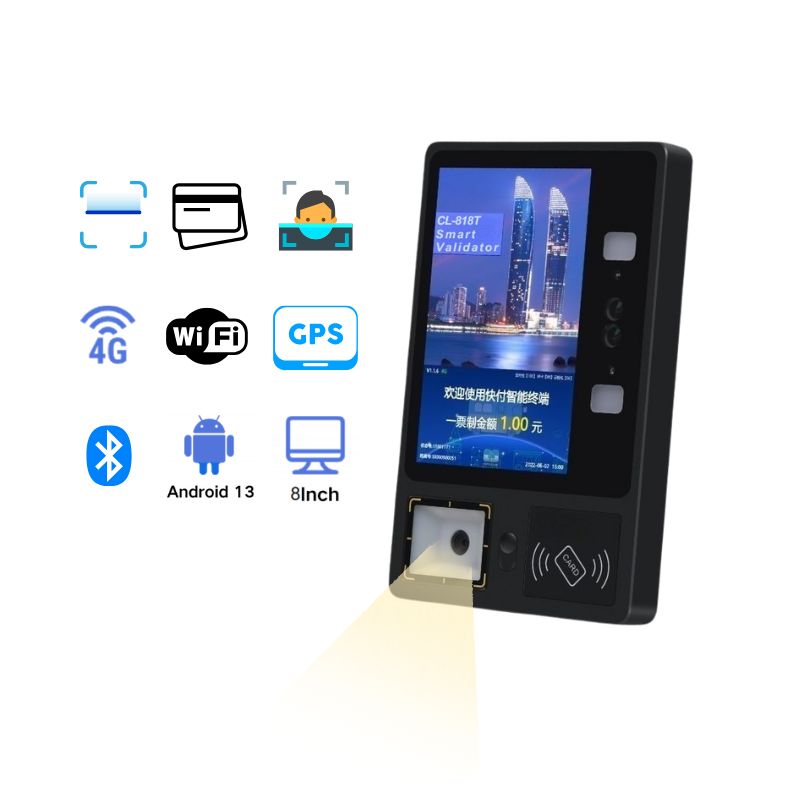Hardware Design and Manufacturing
Durable Materials: Use impact-resistant and corrosion-resistant materials (e.g., metal alloys or high-strength engineering plastics) for the housing to withstand frequent use and harsh environments (e.g., rain, dust).
Modular Design: Independent encapsulation of components such as card readers (supporting IC cards, NFC, QR codes), communication modules (4G/5G, Wi-Fi, Bluetooth), and power modules for easy maintenance and upgrades.
Thermal Management: Incorporate heat sinks or passive cooling structures to prevent overheating during prolonged operation.
Software System Stability
Multi-Protocol Compatibility: Support standards like ISO/IEC 14443 (transit cards), EMVco (financial payments), and QR codes.
Anti-Freeze Mechanism: Integrate a watchdog timer to trigger automatic reboots during system anomalies.
Offline Mode: Enable local storage of transaction data during network outages, with synchronization to servers upon reconnection.
Security Measures
Encryption Chips: Use hardware-level encryption (e.g., PSAM cards) to protect transaction data, complying with PCI DSS standards.
Tamper Detection: Embed sensors to lock the system and alert the platform upon unauthorized disassembly.
ESD/Surge Protection: Circuit boards must pass IEC 61000-4-2 (electrostatic discharge) and IEC 61000-4-5 (surge) tests.
Environmental Adaptability
Wide Temperature Operation: Operating temperature range of -25°C to +70°C, with humidity tolerance of 5%–95% (non-condensing).
Water and Dust Resistance: Minimum IP54 rating for transit environments; outdoor models require IP65 or higher.
Vibration Resistance: Pass MIL-STD-810G vibration tests to withstand vehicle motion.
Power Management
Wide Voltage Input: Support 9V–36V DC input to handle fluctuations in vehicle power systems.
Backup Battery: Include lithium batteries or supercapacitors to maintain clock and data storage for at least 72 hours during power outages.
Production and Quality Control
Certified Components: Critical parts like card readers and communication modules must pass FCC/CE certifications.
Burn-In Testing: Conduct 72-hour full-load operation tests on sampled units before mass production.
Traceability System: Assign unique serial numbers (SN) to each device, linked to production batches and QC records.
Functional Testing
Card Reading Performance: Verify success rates (≥99.9%) at varying distances (0–10 cm) and angles.
Multi-Payment Validation: Test hybrid scenarios with physical cards, mobile NFC, and QR codes (static/dynamic).
Communication Testing: Validate data retransmission under weak 4G/5G signals and post-recovery data synchronization.
Performance Testing
Concurrency Handling: Simulate peak-hour transactions (20+ per second) with response times <300 ms.
Storage Capacity: Ensure local storage for ≥100,000 transaction records with cyclic overwriting and no data loss.
Environmental Testing
Temperature Cycling: Storage at -30°C to +85°C and operation at -25°C to +70°C for 24 hours each.
Salt Spray Test: Expose metal components to 5% NaCl spray for 48 hours to assess corrosion resistance.
Dust Ingress Test: Validate IP6X dustproof capability per GB/T 4208-2017.
Security Testing
Penetration Testing: Simulate SQL injection, MITM attacks, etc., to ensure no vulnerabilities.
Data Encryption Verification: Confirm end-to-end encryption of sensitive data (card numbers, amounts) via packet analysis.
Physical Attack Resistance: Test self-destruct mechanisms during tampering or circuit shorting.
Lifespan Testing
Card Reader Durability: Perform 1 million swipes with an error rate <0.01%.
Button Endurance: Test physical buttons for 500,000 presses without failure.
Display Aging: Continuous illumination for 5,000 hours with no ghosting and <15% brightness decay.
Compatibility Testing
Cross-Region Card Types: Validate support for municipal transit cards (e.g., Ministry of Housing and Urban-Rural Development standards, Ministry of Transport standards), bank cards, and non-standard cards (e.g., smart rings).
International Payments: Ensure compatibility with Visa/Mastercard contactless payments (requires PBOC 3.0 certification).
Electromagnetic Compatibility (EMC) Testing
Radiated Emissions: Pass CISPR 22/EN 55022 Class B to avoid interference with onboard electronics.
Immunity: Maintain functionality under 30 V/m electric fields (IEC 61000-4-3).
Certification Testing
Industry Compliance: Meet JT/T 905-2014 (China’s onboard terminal standard) and UnionPay terminal certification.
Global Certifications: Pass CE (EU), FCC (US), KC (South Korea), and other regional market requirements.
Multilingual Support: Configure bilingual interfaces (e.g., Chinese/English, Arabic) for export markets.
Over-the-Air (OTA) Updates: Enable delta firmware updates to minimize data usage, with resume-from-break functionality.
Data Analytics Integration: Provide APIs for real-time passenger flow and device status reporting to transit management systems.
By adhering to these design and testing protocols, transit card readers can achieve long-term reliability in complex environments, minimize failures, and meet security and regulatory requirements. Manufacturers should collaborate closely with transit operators and payment institutions to tailor solutions to operational needs.
 Transportation NFC IC card QR scan payment management system
Transportation NFC IC card QR scan payment management system
 Cardlan provides payment terminals for you!
Cardlan provides payment terminals for you!
 Code Scanning and Recognition Machine for Enterprise Bus (Swipe IC Card + Scan QR Code)
Code Scanning and Recognition Machine for Enterprise Bus (Swipe IC Card + Scan QR Code)
 Cardlan complete system and hardward provider
Cardlan complete system and hardward provider